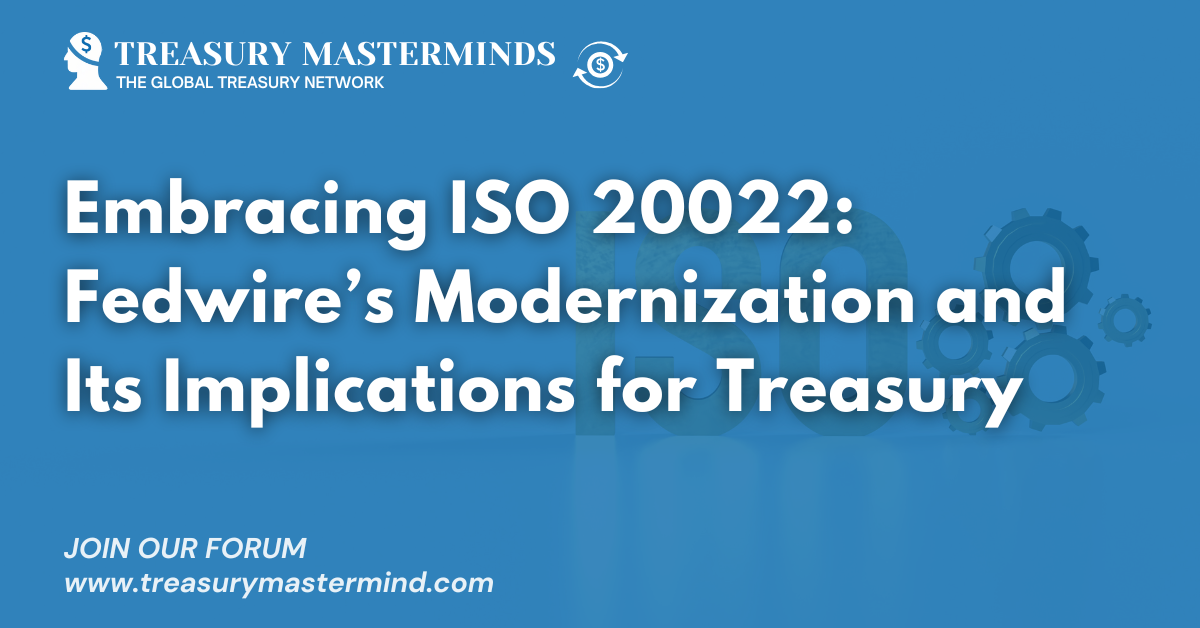
How digital assets enable instant settlement and reconciliation
This article is written by Fortris The inherent delays involved in traditional cross-border payments are an inconvenience, and can be a barrier to progress and efficiency. What if there were a way to make it all happen in an instant? In banking systems, the journey of a payment from one account to another goes through several stages, often invisible to the everyday consumer. This complex process involves clearing, settlement, and reconciliation to initiate, approve, and finalize payments. However, it’s often slow and cumbersome, especially in cross-border transactions with different systems and standards. Digital asset technology offers a revolutionary leap forward, dramatically shortening the payment cycles for businesses. Read on to find out how. What are clearing, settlement, and reconciliation? First, let’s take a look at how regular transactions work. The process can be broken down into three essential steps: clearing, settlement, and reconciliation. Clearing Clearing involves confirming the details of a transaction, such as the amount to be transferred and the parties involved. This step ensures that the buyer has the funds available and the seller agrees to the sale terms. In the traditional banking system, clearing prepares for the actual movement of money, acting as a safeguard against potential errors or fraud. Settlement Settlement is the actual exchange of payment. Think of it as the moment the money physically leaves one account and lands in another. It usually takes several days, depending on the transaction type and the institutions involved. Reconciliation Reconciliation is the post-transaction verification process. It involves checking that the amounts debited and credited are correct and that the transaction has been recorded accurately on both ends. It’s similar to balancing a checkbook or cross-verifying your bank statement against your records. This process is crucial for businesses and financial institutions to maintain accurate financial records and ensure that all transactions are accounted for properly. How does a transaction work? To help you understand how clearing, settlement, and reconciliation work in practice, let’s take a look at a simple example. Imagine you’re buying a coffee. You swipe your card, and in return, you get your coffee. This transaction goes through a few steps before it’s considered complete for everyone involved, not just you and the coffee shop. Clearing: This is like saying, “I want to buy this coffee.” It’s the process where the details of the purchase (like who’s buying, what’s being bought, and how much it costs) are agreed upon and prepared for the actual money movement. Settlement: This step is where the money actually changes hands. This is when your card payment goes through. The process takes several days because it moves through various systems and checks. Reconciliation: After the settlement, the coffee shop needs to make sure they received the right amount of money for the coffee. This step involves checking records to confirm that the payment made matches the sale’s details. The transaction is longer and more complex than it might seem—and this is just for a cup of coffee. For larger-scale B2B transactions, like paying staff in different countries or bulk ordering raw materials, the process is essentially the same but typically takes longer as more verification is required. Bank transfers and credit card payments Businesses typically send and receive payments via bank transfers or with credit cards. With bank transfers, clearing and settlement can be a slow process, often taking several days to complete, especially if your transfer falls on a weekend or public holiday. Reconciliation, too, can be labor-intensive, requiring manual verification of records. Now, you might be thinking that paying by credit card is more convenient, but that’s not necessarily the case. Credit card payments clear quickly because they use digital systems to initiate and approve transactions. However, settlement typically takes one to three business days. Then, reconciliation involves verifying transaction records against statements, complicated further by fees, refunds, and chargebacks (refunds requested by the cardholder, often due to disputes such as not receiving an item or being charged incorrectly). With both bank transfers and credit card payments, a transaction involves a lot of steps and can take several days. There’s paperwork, verification, and waiting periods. Fortunately, there is a better way: using blockchain-based digital assets. Payments on the blockchain Blockchain technology simplifies the clearing, settlement, and reconciliation process. In a blockchain transaction, when you transfer digital assets, the process merges the verification of the transaction (confirming it’s legitimate) with the actual movement of funds. This happens in a secure and almost instantaneous manner. Once the transaction is added to the blockchain, it’s confirmed and cannot be altered, ensuring both parties have clarity and certainty immediately. Going back to our coffee shop example, imagine paying via the blockchain. You initiate a payment, directly transferring digital funds to the coffee shop’s wallet. This action is immediately verified and permanently recorded on a public ledger, visible to all but unchangeable. The coffee shop sees the payment in real-time, and the deal is sealed right away. Why is it so fast compared to traditional payments? Blockchain technology operates without a central authority. In traditional banking, a central entity like a bank confirms the transactions, whereas blockchain transactions are validated by a distributed network of computers. The lack of a central authority boosts efficiency and reduces the potential for errors and disputes, making blockchain an attractive option for businesses. This decentralized system is enabled by public key cryptography, a secure method of digital communication that ensures only the intended recipient can access the sent funds. This ensures blockchain transactions are not only fast, but also secure. To learn more about how this works, consider reading up on public key cryptography, which provides the building blocks for secure, direct transfers of digital assets on the blockchain. Benefits of digital asset payments Here are the main advantages of digital asset payments: Digital asset payments with Fortris Fortris enables enterprise businesses to take advantage of the speed and efficiency of blockchain payments. Fortris provides an off-chain record of all on-chain transactions using live data from the…

Everything you need to know to set a budget rate
This guide is from our content partner, Ebury It’s crucial for you and your team to define a robust FX strategy for your business. However, in the global currency landscape, where many factors are constantly changing and evolving and, at times, presenting unprecedented challenges, this begs the question: How do we set a robust FX strategy? What is a budget rate? A budget reference rate, commonly abbreviated as budget rate, is a reference exchange rate that a company uses to set prices, costs, or benchmark for a campaign or budget period. One goal of FX strategy is to protect this budget rate and fortify cash flow forecasts when transacting internationally. For example, if you are a UK importer buying your goods from a supplier in EUR and selling your final product in GBP, you will need to know the cost in GBP to calculate the selling price within the UK. Setting a budget rate is essential for any global business, whether importers or exporters. It enhances financial planning, improves forecasting, provides certainty about the future value of FX exposures, and helps gauge the impact of FX market fluctuations on profit margins. Common methodologies to calculate a budget rate There is no straightforward answer or one-size-fits-all approach to implementing a budget rate in your FX or treasury policy. It should be well-thought, considered within the overall FX strategy, driven by company forecasts and data, and tailored to suit your unique needs and financial goals. If you are an importer, it can be your cost rate plus some buffer to ensure stability. If you are an exporter, it is the rate you expect to convert your incoming foreign currency exchange to home currency. Depending on the seasonality, if you want to set stable prices for the year at the start of your annual budget, the budget rate will coincide with your annual ‘campaign’. In this case, protecting the budget rate (with FX hedging) against unpredictable currency rates is akin to protecting the campaign rate. However, the approach to arriving at this rate changes if you are a business that runs more than one campaign within a budget period. In this case, you will need to protect the budget rate of an individual campaign rather than the annual budget rate. Different businesses approach this depending on their business situation, including FX flows, historical data, cash flow forecasts, needs, goals, and even risk tolerance levels. It can be: Each year, each business, and each goal demands a unique approach. Using last year’s budget rate as a benchmark because the exchange rate favoured you in the previous year may not be the best approach. Similarly, using the current spot rate when budgeting may expose you to future fluctuations. Hence, this approach is best suited when you have a short-term outlook. In a nutshell, depending on your goals, you’ll set a budget rate before the start of the financial year, season, period or order and, accordingly, design an FX strategy. Questions to consider before setting a budget rate If you are from the finance or treasury team, here are some of the questions that will help you assess your business circumstances and FX flows before you set up a budget rate: Setting a budget rate isn’t easy. But the right approach will help you build a resilient FX strategy, fortify financial stability, monitor your exposure, and optimise your international cash flows. Read the free e-book to decode the role of a budget rate, its importance, how to set it and what to consider before applying it: CLICK HERE TO GET E-BOOK Also Read Join our Treasury Community Treasury Masterminds is a community of professionals working in treasury management or those interested in learning more about various topics related to treasury management, including cash management, foreign exchange management, and payments. To register and connect with Treasury professionals, click [HERE] or fill out the form below. Notice: JavaScript is required for this content.

Embracing ISO 20022: Fedwire’s Modernization and Its Implications for Treasury
From Treasury Masterminds The upcoming transition of the U.S. Fedwire Funds Service to the ISO 20022 messaging standard marks a pivotal moment in payments modernization. Originally set for July 14, the move underscores a fundamental shift from the current format to a globally accepted standard, promising enhanced data richness, improved straight-through processing, and greater interoperability across financial systems. Understanding ISO 20022 ISO 20022 is more than just a technical upgrade; it represents a paradigm shift in payments infrastructure. Unlike its predecessor, it offers comprehensive data capabilities, supporting richer payment information, structured messaging formats, and improved end-to-end visibility. For treasurers, this means enhanced efficiency in cash management, better risk mitigation through improved data quality, and enhanced liquidity forecasting capabilities. Beyond IT: A Treasury Imperative While often viewed as an IT initiative, ISO 20022 implementation is fundamentally a treasury matter. Treasurers play a crucial role in ensuring smooth integration and leveraging the new standard to optimize treasury operations. Key responsibilities include: Internal Data Quality Challenges One of the critical challenges for organizations during the ISO 20022 implementation is ensuring robust internal data quality. Detailed address fields, beneficiary information, and payment references must be accurately structured to meet the new standard’s requirements. Incomplete or inconsistent data can lead to transaction failures, delays, and reconciliation issues, impacting overall operational efficiency. The Impact on Treasury Operations Moving Forward As the deadline approaches, treasurers must collaborate closely with IT teams, financial partners, and vendors to ensure a seamless transition. Beyond compliance, ISO 20022 presents an opportunity for treasury departments to innovate and optimize their payment processes, driving strategic value for the organization. Conclusion The ISO 20022 Fedwire migration represents more than a technical upgrade—it’s a transformative opportunity for treasurers to modernize payment operations, enhance efficiency, and strengthen financial resilience. Embracing this change positions treasury teams at the forefront of financial innovation, paving the way for a more connected and data-driven future. Also Read Join our Treasury Community Treasury Mastermind is a community of professionals working in treasury management or those interested in learning more about various topics related to treasury management, including cash management, foreign exchange management, and payments. To register and connect with Treasury professionals, click [HERE] or fill out the form below to get more information. Notice: JavaScript is required for this content.

The Evolution of Treasury KPIs: 6 Metrics That Matter in 2025
This article is written by Treasury4 Business and financial landscapes are constantly evolving—and with them, the function of the treasurer’s office. In years past, the treasurer’s responsibilities focused primarily on cash management and liquidity oversight. But today, the modern treasurer role has developed into one of a strategic partner responsible for driving business growth. As the treasurer’s responsibilities have grown, so have the key performance indicators (KPIs) that measure its success. As we enter 2025, new KPIs are shaping the way treasurers approach decision-making and financial strategy. Today, we’ll explore the evolution of treasury KPIs, emerging metrics that matter in 2025—including real-time cash visibility, forecasting, risk management, and more—and how they empower treasurers to excel in today’s data-driven financial environment. The Shift in Treasury KPIs Historically, treasury KPIs revolved around traditional metrics like liquidity ratios, cash flow forecasts, and debt levels. These indicators provided a solid foundation for managing immediate financial needs. However, the financial landscape has grown significantly more complex due to factors such as globalization, increased regulatory scrutiny, and technological advancements. Put simply, traditional treasury KPIs are no longer sufficient to measure treasury performance. While these metrics are still relevant, they tend to have a “rearview mirror perspective”—focusing on historical data rather than real-time insights. They fall short in addressing the dynamic challenges faced by modern treasury teams. Today’s organizations require treasury metrics that can: The result is a growing emphasis on KPIs that are forward-looking, technology-driven, and integrated across systems and departments. With that, let’s take a closer look at some of the specific metrics that matter for treasurers going forward. Emerging KPIs for Treasury in 2025 As the role of the treasurer continues to evolve, several modern KPIs are taking center stage. These metrics empower treasurers to achieve greater agility, precision, and alignment with organizational priorities. 1. Real-Time Cash Visibility Real-time cash visibility is a critical component of the modern treasurer’s office. Where is cash deposited and with whom? What is the complete picture of liquidity across cash and investments? How much cash is restricted? Organizations require granular insights into cash positions at the entity and department levels to make swift, informed decisions. Delayed or incomplete data on cash positions can result in missed investment opportunities, inefficient financial strategies and decision-making, or reporting errors. Leveraging tools with real-time reporting capabilities ensures accurate cash tracking across accounts and divisions, enabling better liquidity management, risk mitigation, and agility in making data-driven decisions. 2. Working Capital Efficiency How efficiently is your capital working for your organization? This is a crucial question that treasurers must monitor closely. Working capital efficiency is measured in several ways, including: Tracking metrics like days sales outstanding (DSO), days payable outstanding (DPO), and inventory turnover provides insights into operational performance—and can help treasurers keep a thumb on the pulse of capital efficiency. Adopting automation tools can help improve efficiency by reducing manual processes, enabling faster reconciliation, and providing more accurate working capital analysis. 3. ESG-Linked Financial Metrics In recent years, environmental, social, and governance (ESG) considerations have become a central focus for businesses. As a result, KPIs tied to sustainability now play a pivotal role in treasury operations. For instance, treasurers are now responsible for overseeing “green” financing initiatives, ESG-compliant investments, and sustainability targets for the organization. By managing ESG financial metrics, treasury teams contribute to their company’s broader corporate social responsibility goals while staying ahead of investor expectations. 4. API and Integration Metrics In an era of interconnected tech systems, API integrations are vital for seamless data exchange between banks, ERPs, and treasury management systems (TMS). Improved integration leads to faster decision-making, reduced errors, and better data integrity. Related KPIs can assess the speed, accuracy, and accessibility of data shared through APIs. 5. Forecast Accuracy Rates Accurate forecasting has always been a cornerstone of treasury operations, but the adoption of predictive analytics is elevating its importance. The key metric for treasurers to consider is the precision of their cash flow forecasts—in other words, the variance between predicted and actual cash flows. Forecasting accuracy is critical for making agile, forward-looking, data-driven business decisions that allow the organization to stay one step ahead of the competition. Leveraging historical data and predictive models enhances forecast reliability, which reduces surprises and enables proactive strategies. 6. Risk Management KPIs With growing exposure to global markets, cyber threats, and evolving regulations, risk management has become more important than ever. It’s critical for treasurers to monitor their company’s currency exposure, counterparty risk, and the effectiveness of hedging strategies. They must also keep a close eye on factors like financial data security and regulatory compliance. Effective risk management and mitigation protect against market volatility, help comply with changing regulations, and safeguard against data breaches. How to Implement and Track New Treasury KPIs These emerging KPIs require treasurers to adopt the right combination of technology, collaboration, and goal setting. Here are some tips for implementing them. 1. Leverage Advanced Treasury Platforms Treasury management systems like Treasury4 enable teams to centralize data, automate reporting, and gain real-time insights. Features such as API integrations and predictive analytics enhance the accuracy and efficiency of KPI tracking. 2. Foster Cross-Functional Collaboration Treasury teams must work closely with finance, compliance, and operational units to align their KPIs with organizational goals. Collaborating on KPIs and sharing accountability ensures everyone within the organization is working towards the same set of broader goals. 3. Set Benchmarks and Continuously Improve Defining clear benchmarks for each KPI helps measure progress and identify areas for improvement. Regularly review your benchmarks and make adjustments to ensure that KPIs remain relevant and impactful. The Strategic Role of KPIs for CFOs and Treasurers Emerging KPIs are more than performance indicators; they are strategic tools that empower CFOs and treasurers to align treasury functions with overarching business objectives. With valuable insights into liquidity, risk, and efficiency, CFOs can make informed decisions to drive corporate success. For example, with access to real-time cash visibility, CFOs can help allocate resources to high-priority projects or optimize debt structures. Meanwhile, treasurers…

Building resilience through treasury policies
This article is a contribution from our content partner, TreasurySpring Following our webinar on Treasury Policy, it’s clear that the evolving financial landscape presents both challenges and opportunities for treasurers. The discussion shed light on the critical role of treasury policies in guiding organisations through uncertainty, fostering resilience, and embracing innovation. This blog captures the webinar’s key insights to help organisations stay ahead in 2025. Importance of treasury policies Treasury policies are more than just procedural documents; they’re the backbone of financial governance. They serve as essential frameworks to manage cash, foreign exchange, debt, compliance, and banking relationships. Effective treasury policies ensure consistency, provide clear guidance for stakeholders, and establish measurable benchmarks for performance, making them indispensable for organisations aiming to navigate challenges with confidence. As a treasurer, they’re your license to act. 2025 challenges and adjustments Navigating interest rate volatility The Federal Reserve’s uncertain trajectory on interest rates continues to create market turbulence. This interest environment will require treasurers to remain agile, conducting out-of-cycle policy reviews to reassess investment strategies. What may be an annual or bi-annual review cycle, in times of uncertainty, can be increased to ensure you have the right risk exposure and controls. This proactive approach ensures that organisations can pivot quickly, safeguarding returns, and minimising risk. The rise of Bitcoin and digital assets With increasing regulatory clarity and institutional adoption, boards are urging treasurers to assess the feasibility of incorporating digital assets. While this represents uncharted territory for many, it underscores the need for forward-looking treasury policies that adapt to emerging trends. Evolving treasury policy best practices Striking a balance between flexibility and governance For multinationals with treasury teams operating across geographies, ensuring some degree of decentralisation of decision-making to account for regional nuances is important. The general philosophy of the policy should be the same everywhere, but global teams need flexibility for regional variations, particularly in areas with: exchange controls; less robust banking systems; limited financial options; different payment processing requirements etc. Quantifying policy parameters Clear, measurable guidelines, such as FX exposure limits or weighted average maturity targets only enhance a policy’s effectiveness. These metrics provide treasurers with actionable insights and a concrete framework for decision-making. Socialising policy changes Securing buy-in from audit committees, CFOs, and other stakeholders early in the process fosters trust and accelerates approval for policy updates. Transparency and collaboration are key to ensuring seamless implementation. Emerging topics in treasury Integrating artificial intelligenceAI is revolutionising treasury operations, offering unprecedented efficiency. However, this innovation comes with risks. Policies must govern the use of AI tools, ensuring compliance with data security standards and mitigating the potential for breaches or errors. By addressing these challenges head-on, treasurers can leverage AI’s benefits without compromising security. Strengthening bank and vendor management Effective management of banking relationships remains a critical challenge. Treating banks as vendors, with clear oversight, transparency, and cost-control measures is essential. Regular reviews and structured policies can help mitigate risks associated with poor account management. Enhancing cybersecurity in treasury operations With cyber threats on the rise, treasurers must prioritise cybersecurity. Regular penetration tests, employee training, and robust callback protocols are vital to safeguarding financial systems. Additionally, periodic reviews of cybersecurity insurance and internal disaster recovery plans ensure preparedness against potential breaches. As treasurers face an era of unprecedented challenges and opportunities, robust and adaptable treasury policies are more critical than ever. From navigating macroeconomic uncertainties to embracing technological advancements, these frameworks should enable organisations to remain resilient and forward-looking. And by staying proactive and collaborative, treasury teams can turn policy into a powerful tool for navigating the complexities of 2025 and beyond. *TreasurySpring’s blogs and commentaries are provided for general information purposes only, and do not constitute legal, investment or other advice. Also Read Join our Treasury Community Treasury Masterminds is a community of professionals working in Treasury Management or those interested in learning more about various topics related to Treasury Management, including Cash Management, Foreign Exchange Management, and Payments. To register and connect with Treasury professionals, click [HERE] or fill out the form below to get more information. Notice: JavaScript is required for this content.

Formula for trouble: why Excel can’t handle FX portfolio management anymore
This article is a contribution from our content partner, Bracket Spreadsheets have served treasury teams well – but markets, tech, and FX risk have moved on. It’s time to rethink how you manage your foreign currency portfolio and stop clicking on that familiar green icon. Love it or hate it, Excel is embedded in treasury workflows across the globe. But what started in the 1980s as a flexible, go-to tool has become a bottleneck – especially for mid-market teams managing multi-entity, multi-currency portfolios in fast-moving conditions. As Pierre Anderson, Co-Founder, Bracket, explains: “It’s not that Excel is broken per se. It’s just not designed to handle the complexity of modern FX portfolios. And it’s holding many treasury teams back.” Here’s why spreadsheets are no longer cutting it: 1. Markets move fast. Excel doesn’t FX is a real-time market. Spreadsheets are typically static (unless you do the work to automatically pull in rates, which many teams don’t have the in-house skills or resources to achieve). So, by the time treasury has updated yesterday’s rates and rebuilt its exposure view in Excel, the market has already shifted. “That delay has both operational and strategic impacts, weakening decision-making and potentially increasing risk,” cautions Anderson. 2. Risk management shouldn’t rely on VLOOKUP In addition to the lack of real-time data, when markets are calm, spreadsheets can give the illusion of control. But in volatile conditions, the cracks become obvious. “Rather than being purely reactive to market moves, treasurers are increasingly looking to be proactive around their FX exposures, running stress tests, modelling worst-case scenarios, and determining clear courses of action,” elaborates Anderson. But Excel isn’t built for that. “Simulating the impact of a 5% move in EUR/USD on cash flow, for example, typically requires manual inputs, duplicated tabs, and formula checks. Often, it also means hours of work – and the potential for human error can lead to a lack of confidence in the result,” he notes. The problem with Excel isn’t just humans, of course. It’s more structural: “All this means there’s no real safety net. And when you’re managing millions in FX exposure, that’s not only inefficient, but also dangerous,” explains Anderson. 3. Your team is working around the system, not with it Many treasury teams have built complex workarounds just to make Excel behave like an FX portfolio management tool. They’ve added macros, linked files, and built templates with tabs for each counterparty and/or currency. And in some cases, they’ve created truly impressive set-ups (with very limited resources). Until a link breaks and things unravel. Or the key person who built the macros decides to leave, taking their knowledge with them. As Anderson points out: “This kind of workaround also means highly qualified professionals are buried in repetitive maintenance tasks, spending more time updating spreadsheets than thinking about pricing, timing, or strategy. Understandably, team members become frustrated. It’s not sustainable and doesn’t add value.” 4. Fragmented files mean fragmented decisions Another challenge facing many mid-market businesses is that FX exposure doesn’t live in one place. There is no single source of truth. As Anderson explains: “Different business units often maintain their own spreadsheets. Trades might be logged in different formats. Subsidiaries might also update their numbers at different times. Group Treasury is then expected to manually piece together a coherent view from scattered sources.” Unsurprisingly, this approach can be time-consuming and unreliable. “We’ve also seen teams double-count trades because of mismatched formats. Or miss exposures entirely because of delayed updates. Another common issue is making hedging decisions based on partial data, only to revise them days later when new numbers surface.” In other words, this fragmentation makes it much harder to act decisively or explain the company’s true risk position. Time for a rethink What’s clear to Anderson (and no doubt many treasury leaders) is that Excel was never meant to be the main tool for managing currency risk. It’s become the default because it’s accessible, affordable – and already in place. But when Excel starts hampering decision-making, limiting talent, and draining value from the function, it’s time to think again. “I’m not advocating entirely ditching Excel! It’s just about choosing the right tool for the job,” explains Anderson. “Spreadsheets are still useful. But they’re not enough for managing currency exposure at scale. And we see more mid-market firms making the switch to dedicated FX portfolio management tools. Because they’ve realised that Excel was creating blind spots they couldn’t afford to ignore.” In contrast, a centralised FX portfolio management platform creates a single source of truth. “Everyone sees the same data. Everyone works from the same numbers. And when a fast decision is needed, treasury is prepared and ready, not busy reconciling.” The benefits are real: And perhaps most importantly, a team that’s no longer buried in ‘busywork’, thanks to the significant reduction in time spent on manual data entry and reconciliation As Anderson concludes: “Spreadsheets have served their purpose, and still do in many areas. But FX portfolios have evolved. The tools we use to manage them need to evolve too. Because when you’re using something that wasn’t built for the job, you’re not managing risk. You’re adding to it.” Also Read Join our Treasury Community Treasury Mastermind is a community of professionals working in treasury management or those interested in learning more about various topics related to treasury management, including cash management, foreign exchange management, and payments. To register and connect with Treasury professionals, click [HERE] or fill out the form below to get more information. Notice: JavaScript is required for this content.